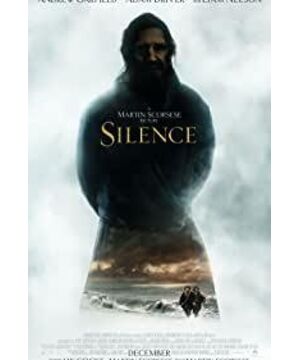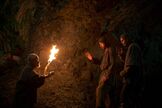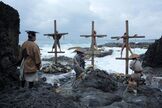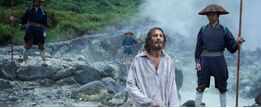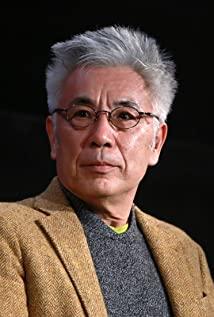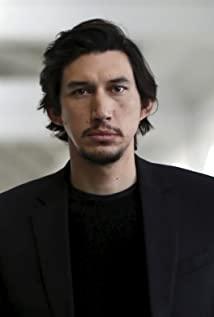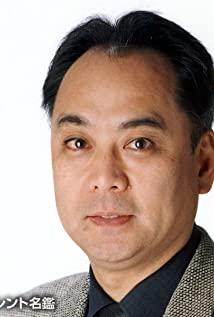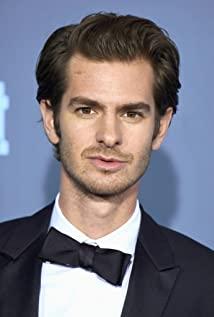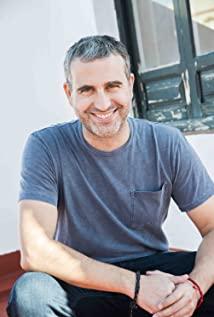I have never been silent."
First, Martin Sicoses’ second religious work, with a preparation period of more than 20 years.
As an Italian descendant, Martin Sicoses’ films all carry Strong Italian cultural stigma, such as "Poor Streets", "Angry Bull", "Good Guys" and so on. His father was a devout Catholic, which inevitably affected Martin.
As early as 1988, after several efforts, Sikoses put the novel "The Last Temptation of Christ" on the screen. This film brought him a huge reputation, also caused numerous controversies, and suffered a ban. As a Catholic, Sicoses tried to make the image of Jesus real and concrete, which was regarded as a blasphemous scripture by the religious circles, which caused an uproar at one time.
In 2016, at the age of 74, Sikorses once again realized his dream, adapting his long-awaited Japanese writer Shusaku Endo's novel "Silence" to the theater. Sikoses said: "It has been 28 years since I first read the original work. This work has never left my mind."
It has been nearly 30 years since he last photographed works on religious beliefs. Thirty years is enough to change many things in a person. The elderly Sikoses no longer has the sharp audacity of "Taxi Driver", nor the maverick like that of "Angry Bull". His age has given him a sense of transcendence and profoundness.
Faith is a very grand and complex subject. From Bergman to Delaier, many major Western directors have had serious and profound works on faith. This Silence by Sicoses also expresses his innermost thoughts on life and beliefs.
Probably because of this seriousness and heaviness, it is somewhat incompatible with the Oscar, who has become less and less emotional in the past two years. The film was nominated for major Oscar awards, and only one technical best photography award was nominated. It can be described as dismal. However, Martin Sikoses no longer needs proof of the award. Time will prove to him.
The film’s story tells about the period when the Tokugawa Shogunate in Japan began to retreat and banned religion. Two Portuguese priests risked their lives to find an abandoned priest. They saw the suffering of Christians and experienced themselves. The shaking of faith finally regained faith. The film explores the nature of faith.
2. Story Background During the
16th century, there were important historical changes in both the East and the West. In Japan, after experiencing the Warring States period, it entered the period of shogunate rule. From Toyotomi Hideyoshi's rejection of Catholicism to the promulgation of Tokugawa Ieyasu's ban on religion, the spread of Christianity in Japan has gradually fallen into trouble. The Shimabara Rebellion that took place in 1637 under the banner of Catholicism made the shogunate determined to completely ban religion and gradually brought Japan into a state of lockdown for 260 years.
During this period, except for the Dutch, Chinese, and North Korean ships, Japan and the rest of the world completely cut off ties.
In Europe, the great maritime discovery and religious reform brought about two major demands for external commercial development and religious dissemination. The earliest spread of religion in Japan was Portugal and Spain.
After the 16th century, the Protestant reform forces led by Martin Luther and Calvin challenged the old Catholicism led by the conservative church. The Netherlands and Britain, which pursued "merchantism" and "separation of business and education", came from behind and became stronger day by day. The diplomatic strategy of the Netherlands and the United Kingdom was welcomed in Japan, which undermined the power of Portugal and Spain in Japan.
In the film, Inoue, an official in Nagasaki, and Rodriguez, a Portuguese missionary, have an argument. Inoue uses a husband and four wives as an analogy to compare the relationship between Japan and Portugal, the West, the Netherlands, and the United Kingdom. This historical background.
3. The movie
"Silence" , which "suffers" faith, lasts 161 minutes. This length is a test for the audience. However, after watching the movie, the author did not feel procrastinated or dull at all. The mood was always tense, and the mind was constantly thinking about the issue of faith. Until the end of the film, this "torment" continued.
This is the effect brought by the proficient film skills of Xixosses, and it is also the shock that the film content brings to the audience's soul.
The film arranges two clues, light and dark. The open line is the process of Rodriguez and other priests looking for the truth about their mentor and his abandonment, and the dark line is the growth of Rodriguez’s own beliefs. This character passes through the path of Father Ferreira again, undergoes constant trials and tests, and has a deeper thinking about faith, and finally at the moment of giving up, he gets a new life in faith.
In him, perhaps the audience can find the answers to these questions-what is the nature of faith? Can faith be forbidden?
———The dividing line of the detailed plot————
The beginning of the film, through the perspective of Father Ferreira, shows the ceremonial punishment scene in Unzen Hell, pouring hot hot spring water on the missionary priest and persecuting him. It gave up faith.
However, the extreme physical pain could not shake the confidence of the congregation, and the determination to martyrdom made the physical pain not worth mentioning. This can only be regarded as a primary test of faith.
Therefore, the two young priests Rodriguez and did not believe that just because of physical pain, their mentor, Father Ferreira, could yield and apostasy. They decided to go deep into Japan to find the truth and accept God's test and trial.
After several toss and turns, under the guidance of Japanese wanderer Yoshijiro, the two arrived in Japan by boat.
During the boat ride, Xikoses arranged a surreal lens. The lens kept rising, and the warm sky changed abruptly. First, there were clouds and dazzling sunlight. This seems to herald the direction of the whole story.
Rodriguez and Father Golbey went to Yuyi Village on the coast of Japan and the villages on the Goto Islands and began a secret mission.
They soothed the suffering of the believers under the high pressure of the government, accepted confession, distributed the sacrament, performed baptism, distributed holy objects, and even distributed the rosary beads they brought to the fanatical believers.
At the end of this paragraph is Rodriguez's narration. He believes that his arrival is to bring new hope to these suffering people, which allows him to find the value of existence.
The arrival of Lord Inoue of Nagasaki (official title) officially began Rodriguez's trial. The whole process is escalated gradually.
Here, Xikoses arranged every test of faith with a sense of ritual, appropriately reducing the visual stimulation of violence, and at the same time giving people a sense of dignity.
The first is "Treading Paint". Treading is a ritual specially invented by the Tokugawa shogunate for the prohibition of religion. Christians are required to trample on Christian icons in public to show their betrayal, and those who refuse will be punished.
I have to mention a historical tidbit here. It is said that the ceremony of "Treading Painting" was brought up by the historical archetype Ferreira (Cristóvão Ferreira, 1580-1650, later renamed Sawano Tadaan) in the film. Nagasaki is the city that implements the most stringent steps. The Nagasaki Yamen has 30 painted boards, some of which are cast in copper, and some are embedded with a bronze statue on a wooden board. Today, 29 of them are in the collection of the Tokyo National Museum.
There are four types of treadmills in the film. The first appeared in Yoshijiro’s flashback paragraphs, followed by the "Jesus Preaching Picture" in Yugi Village, and the third appearance was by Father Ferreira. The picture of the crucifixion of Jesus"; at the end of the film, the board that Rodriguez finally stepped on is the "picture of the crucifixion".
Taehui is a cruel trial to the psychology of believers.
For believers, faith is sacred and inviolable. As long as that foot steps on, it means that you have betrayed your faith.
Here, the two young priests disagree on their beliefs. Father Gulbe still dogmatically asks the villagers to seek courage from God, while Rodriguez believes that under certain circumstances, he can step on it. The emotions in the eyes of the villagers played by Shinya Tsukamoto are extremely complicated.
At the moment of the final test, these four people chose to step on it. But the executive saw through their psychology and understood that they were not really abandoning their religion, and used an upgraded version-spit on the cross. This left the villagers unprepared. With the exception of Yoshijiro, the three refused to act and were judged to be Christians and were given "zhé".
"Water pit" is a criminal law similar to a Roman cross, one of the purposes of its implementation is to deter others. In the film, Sikoses designed the criminal law to resemble the scene at the moment of Christ's death.
The three villagers were tied to the cross and allowed the high tide to beat and drown their noses and mouths. The villagers died in pain one after another from exhaustion. The villager played by Tsukamoto Shinya was treed in the middle and sang a carol before his death. The two priests witnessed the whole process painfully. The death of these three villagers is related to their arrival.
He questioned his faith—why did God remain cold and silent at such a cruel time?
The plot continues to develop, and Father Rodriguez is captured due to Yoshijiro's betrayal.
In this passage, the director arranges a passage for the young priest to drink water by the stream, and the actor finds himself in the reflection on the water surface transformed into the image of Christ. This made him ecstatic.
There is no doubt that in his heart at this moment, he has been incarnate as the Christ with a crown of thorns on his head, who is about to be martyred, and Yoshijiro is the Judas who betrayed Christ for the silver coin. This gave him a great sense of psychological satisfaction, and it was also the source of his conceit—sacrificing himself and fulfilling the doctrine. He firmly believed that martyrdom would be his most correct path.
For the young priest’s thoughts, not only Nagasaki obeys Inoue-sama, but the translator played by Tadanobu Asano knows the final result through only one dialogue. Both of them knew very well that in the end Rodriguez would definitely choose to abandon religion, just like the senior Father Ferreira he was looking for.
Inoue had three dialogues with the male protagonist, gradually discussing the social meaning and nature of religion. Inoue asserted: "You are not a good priest. But you are a good man, so you will succumb."
The situation that the actor is about to face is not martyrdom, but inner torture.
Several believers were arrested with him. Inoue told him that as long as he stepped on and announced his abandonment of religion, these people would be free immediately. Otherwise, these people will face painful death—"They died not for God, but for you." Inoue reminded him clearly.
First, a believer was suddenly beheaded. This was one of the most horrifying scenes in the film, which brought great grief to the priest and other believers.
Immediately afterwards, other believers were taken to the beach, tied up with straw mats, and were drowned in the sea one by one.
In this passage, Father Gulbet's ending comes at any moment. Father Galbe seemed unable to bear this huge pain, and chose to sink into the sea with the believers. This is an act of suicide, which is absolutely forbidden in Christian doctrine. Father Gulbet seems to have chosen "abandoning religion" in another sense.
Rodriguez witnessed this happening. He was suffering tremendously in his heart. But his faith still did not succumb. Even Inoue arranged for him to meet and talk with Father Ferreira, but he didn't change his mind.
Among the drowned believers, there was a young girl who once expressed her yearning for heaven to the hero. The girl said that death is not terrible. You can enter the kingdom of heaven when you die. Since then, there will be no disease, no poverty, no hunger, and no taxes. There is no love in the real world, and the beauty of paradise after death is the driving force for many people at the bottom to convert to religion. For these believers, perhaps death is also a relief.
Finally, the time for the actor to succumb has finally arrived.
The five believers who had declared abandoning religion were given a "hole hanging" in front of him, waiting for him to abandon religion, otherwise these innocent people would die in agony.
"Xiaohang" is an extremely cruel criminal law. The victim’s limbs were tied up, his head was hung upside down, and his head was placed in a filthy cave. A small mouth was cut behind the ear so that the victim could feel his blood slowly flowing out. It often took several days of struggle before he died. The pain was magnified. And extend. According to reports, the historical Father Ferreira finally abandoned his religion more than 5 hours after receiving the hanging cave. In the film, Father Ferreira recalled the scene of the torture.
Perhaps it was Sikorses who arranged a surreal scene here in order to make it easier for the audience to understand, or perhaps it was just an externalization of the hero’s inner voice—God was no longer silent, and he said to the hero—
"Step on. It’s okay. Step on me. I understand your pain. I came to this world to share the pain of people. I bear the cross to share your pain. Your life is now with me."
Probably. The young priest believes that at this moment, in order to save the suffering of these innocent people, even Jesus would make this choice.
At this point, the movie has entered the final stage.
Rodriguez, who eventually abandoned his religion, like Father Ferreira, assisted the shogunate in banning religion, and acted in the work of discriminating believers for the Japanese government. His external faith collapsed, but another faith remained deep in his heart. As Tadanobu Asano said before, it's just a form.
In the final shot, Rodriguez was cremated as a Buddhist, holding the cross given to him by the martyred villager in both hands.
Rodriguez became the last priest of that era. Since him, Christianity has gone into silence in Japan, and it was not until modern times that freedom of religion was opened up. However, although religion is silent, faith has always existed in another form. Endo Shusaku's novel reveals this point. The true meaning of the Lord is hidden in the abandonment of religion, and the power of firm belief hides behind the betrayal.
In the same way, Sikorses perfectly expressed this view through constant trials of a priest-faith in his heart is inalienable!
In the film, Yoshijiro (played by Yosuke Kubuzuka) is an important character. Fr. Yoshijiro and Rodriguez, who are always vacillating, are each other.
Yoshijiro has experienced everything Rodriguez has experienced; Yoshijiro's doubts, Rodriguez is also constantly tortured.
The existence of Yoshijiro is a true portrayal of many believers, who are cowardly, humble, eager to survive, and in awe. It is in these people that religion can truly comfort the soul.
In the Bible, Saint Peter also denied the Lord three times. In constant questioning, denial, and rejection, Christianity has been widely spread among the weak and has become the toughest faith in the world.
Martin Sicoses, who has been making films for more than 40 years, has become increasingly proficient in film skills, and his photography, editing, and actor performance are impeccable. Not being nominated is Oscar's loss, not Sicoses' regret.
In particular, the soundtrack of the film is very restrained. Sikorses uses the sound of nature as a natural background sound, seeming to convey this sentence to the audience-
God suffers together by your side.
He has never been silent.
Finally, welcome everyone to pay attention to my official account: "Daily Fanying" (WeChat ID: meemovie)
As a movie fan, I have always wanted to do something related to movies. "Daily Fan Movie" is purely from the point of view of fans, refining opinions, rejecting long stories, and directly giving you a concise reason for watching movies, and striving to "not waste everyone's time".
Push a movie every day, allowing you to remember a masterpiece in one minute.
In addition, at the end of each recommendation, clicking on the original link will also be accompanied by a viewing link.
In addition, I am also a photography enthusiast, so I will also push a piece of photography every day. While sending it to everyone, it is also a study for myself. For photography, seeing more masterpieces is the fastest way to improve.
View more about Silence reviews


